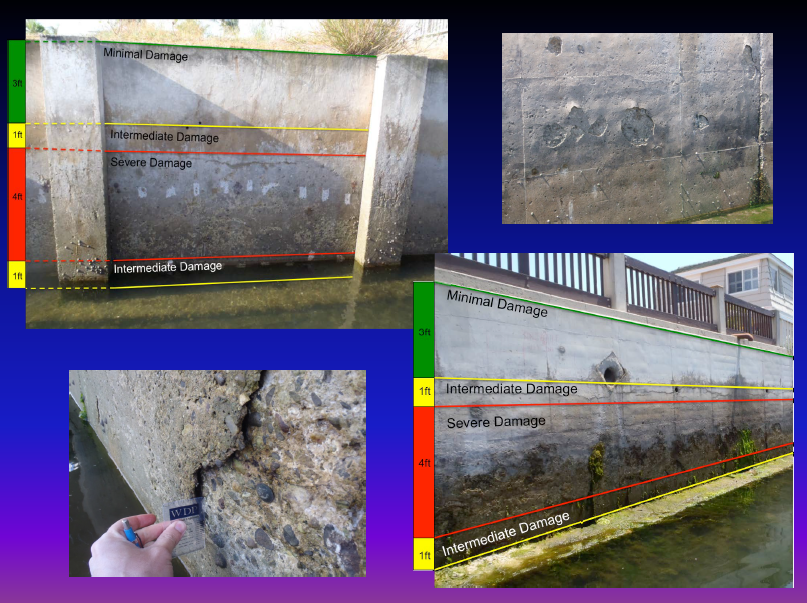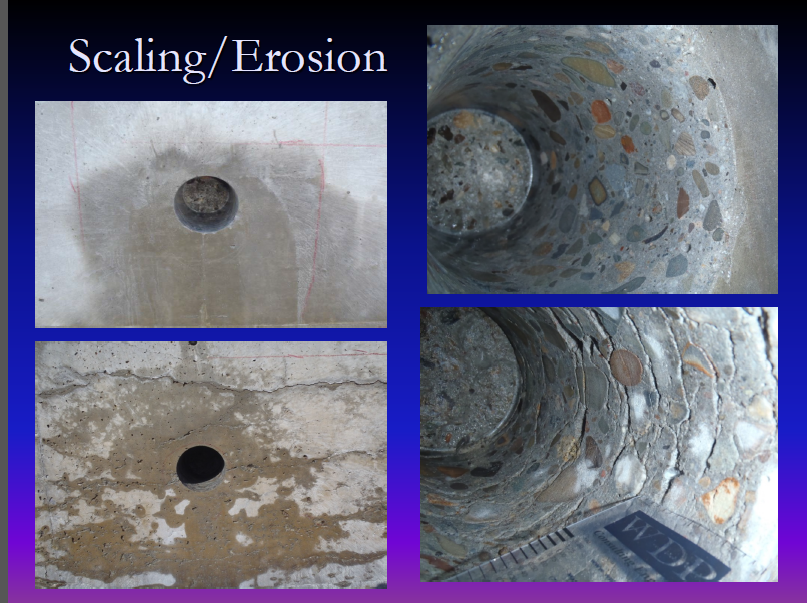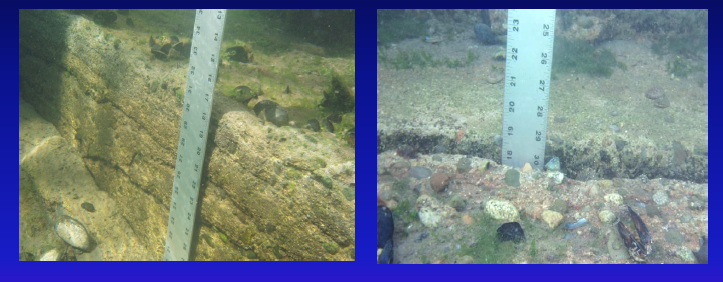CIWHA ANNUAL MEETING 2-15-2014
Seawall Maintenance & Repair 2014 CIWHA Annual Meeting
Speaker:
Cameron Duncan, SE – TranSystems Senior Waterfront Structural Engineer
- Capital Improvement Program – Work Completed To Date
- Wall Assessment – Spring of 2012 (both above and below water)
- Calculation of the Existing Wall Capacity vs. the Load Demand (Earth Pressure, Deck Weight, Seismic Force) to estimate Risk.
- Developed repair alternatives and costs
- Prioritized repairs (High Priority – At risk of near term failures and Long Term Maintenance ranked on a scale of 1-5)
- Ranked the relative condition of each city block in the community.
- Budgets for High Priority Repairs and unit pricing for Long Term Maintenance repairs for 25 years.
Above Water Findings
- Seawall Scaling/Erosion is due to an expansive reaction called alkali-silica reactivity. The section loss of weak concrete ranges from 0-4” of depth and varies dramatically by seawall exposure/environmental orientation.
- In general this damage is worse on Zurn walls but structurally significant on both wall types since the steel reinforcing is very close to the surface of the Boise walls.
- The back face of the wall is in significantly better condition than the front face.
- The tie-back rods are generally in good condition.
- The Boise Wall pilasters repairs are performing well but there are additional repairs needed in a timely manner.



Below Water Findings
- Slope repairs are working well, where performed, but a dozen areas of undermining concern were identified by the engineering crew which swam all 7 miles of the seawall in Phase B.
- Slope repairs are working well, where performed, but a dozen areas of undermining concern were identified by the engineering crew which swam all 7 miles of the seawall in Phase B.

- Continuous 1” wide Separations occur on many Zurn wall foundations between cutoff wall and footing. It is a concern since marine bores may be able to access to timber piling. It is a very inexpensive fix to fill with sand.
Next Step – Capital Improvement Program
The last step of the Program is to prepare a 25 year timeline of work for the entire community. This involves grouping city blocks of repair work into contract sizes which allow the work to be performed efficiently and at level which can be matched to the available or anticipated funding levels.
Program Value
$128,000,000 asset replacement cost vs.
$192,000,000 replacement on emergency basis vs.
$44,000,000 program repair cost to extend life 25-40 years.
- Reduce or Eliminate unanticipated wall failures
- Significant Cost Savings by avoiding Emergency Repairs
- Significant Cost Savings by maximizing the remaining life of the seawalls.
High Priority Repairs – Spring 2014
- 2010-2140 Kingsbridge Way Wall Rotation $532K
- Wall Rotation & Settlement Monitoring Program $24K
- 125’ of Undermined Foundations $175K
- 240’ of Cut-off Wall to Foundation Gap $30K
High Priority Repairs – Fall 2014
- Concrete Jacket repairs for serious spalling on (42) Boise pilasters $200K
- 3900-3966 West Hemlock between Napoli & Ravoli Dr. (4) Overstressed/Cracked Pilasters, (4)Overstressed /Cracked Wall Panels, (30)Deteriorating Panels $1,213K
CIWHA is a voluntary not-for-profit 501-3c corporation founded to comply with requirements set forth in the grant deeds of each Mandalay Bay Property. Every home or lot owner in the Mandalay Bay community is encouraged to join with your neighbors to ensure the on-going vitality of our neighborhood!
